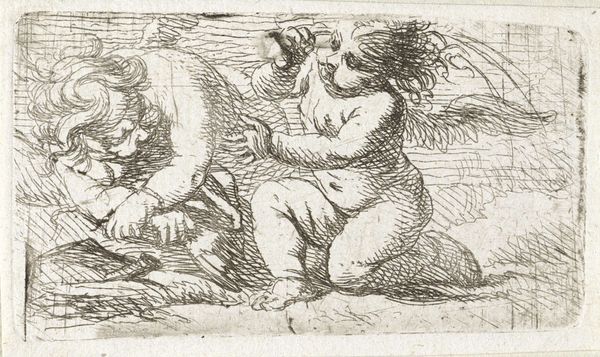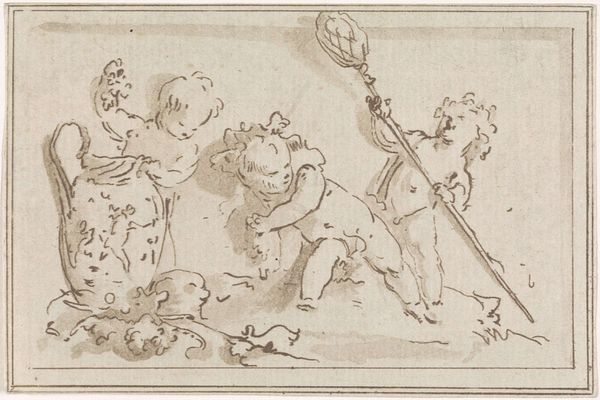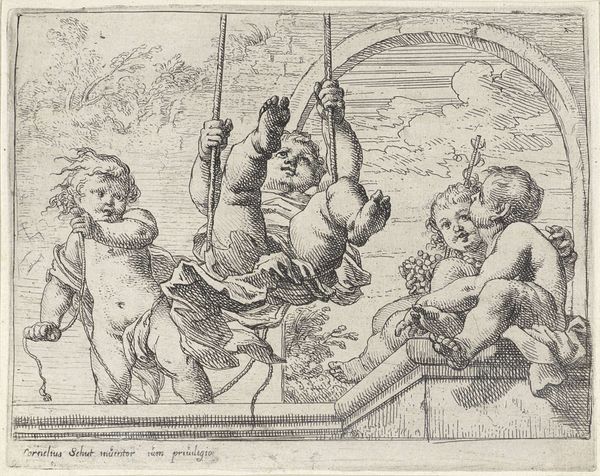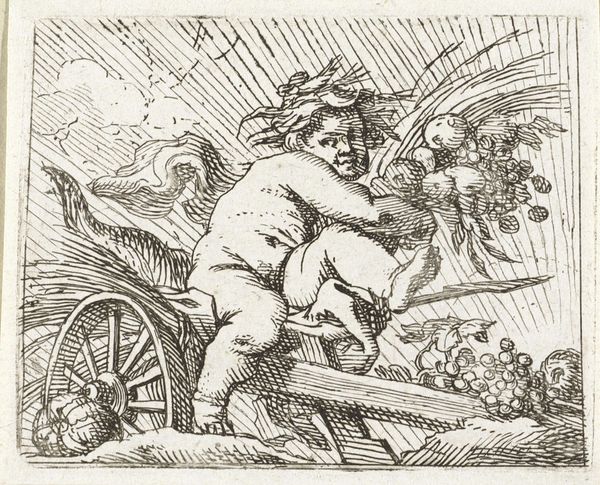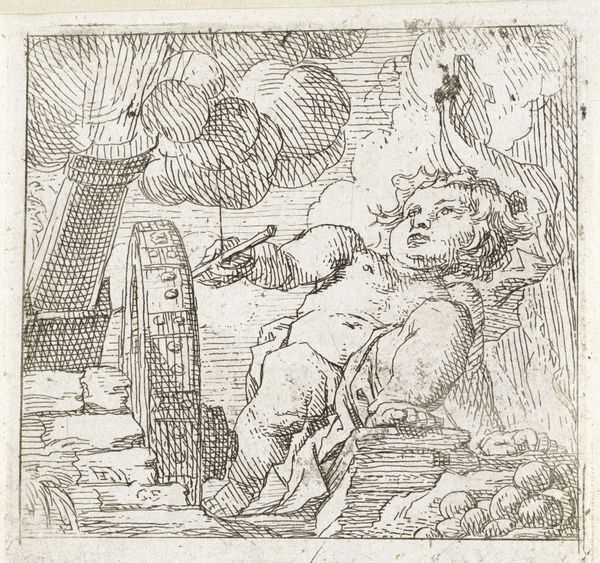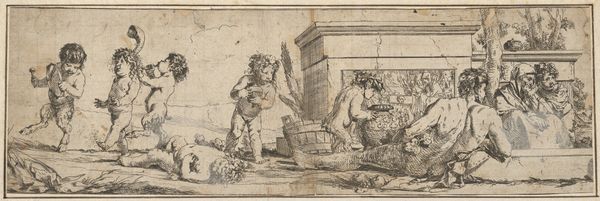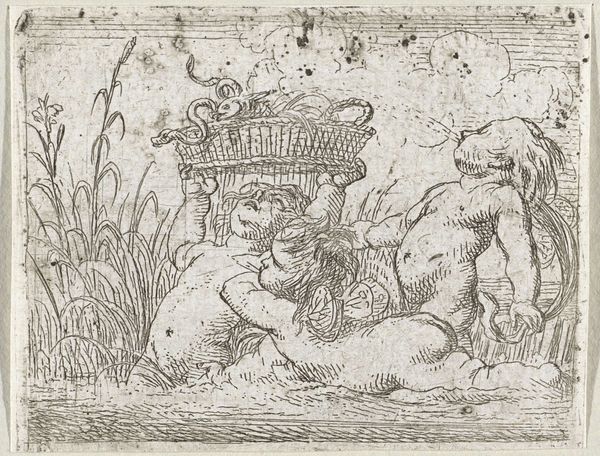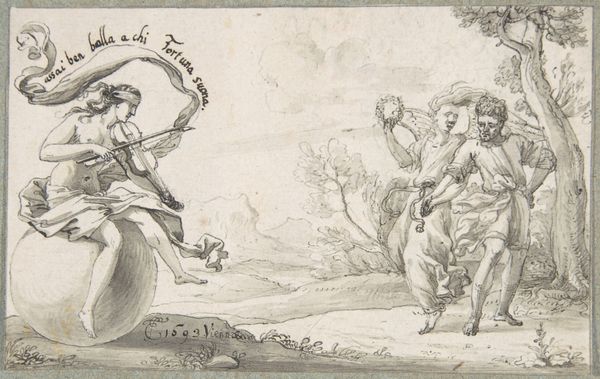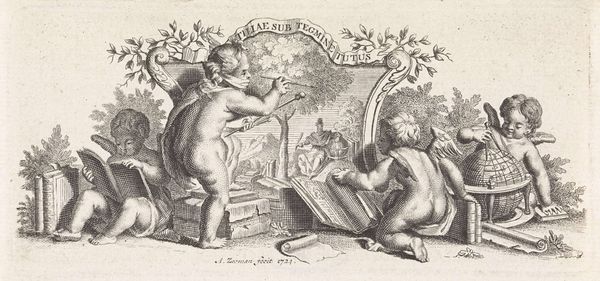
drawing, ink, pen
#
drawing
#
baroque
#
pen illustration
#
figuration
#
ink
#
pen-ink sketch
#
pen work
#
pen
#
genre-painting
Dimensions: height 52 mm, width 99 mm
Copyright: Rijks Museum: Open Domain
Cornelis Schut created this etching of two music-making putti. Winged putti, or cherubic children, became popular during the Renaissance, often representing divine love or playful spirits. Here, one putto energetically beats a drum, while the other joyfully blows a trumpet. Instruments such as these date back to ancient times and were often used in triumphal processions. They symbolize celebration and fanfare. In ancient Roman art, we see similar figures in scenes of Bacchic revelry. And these motifs re-emerge through time, in the Renaissance and Baroque periods, often adorning palaces and churches as emblems of peace and prosperity. In the collective memory, musical putti evoke a sense of nostalgia and longing for an idealized past, when the world seemed filled with harmony and divine grace. Ultimately, Schut's etching reminds us of the enduring power of symbols. They traverse time and cultures, resonating with our deepest emotions and subconscious desires.
Comments
No comments
Be the first to comment and join the conversation on the ultimate creative platform.
